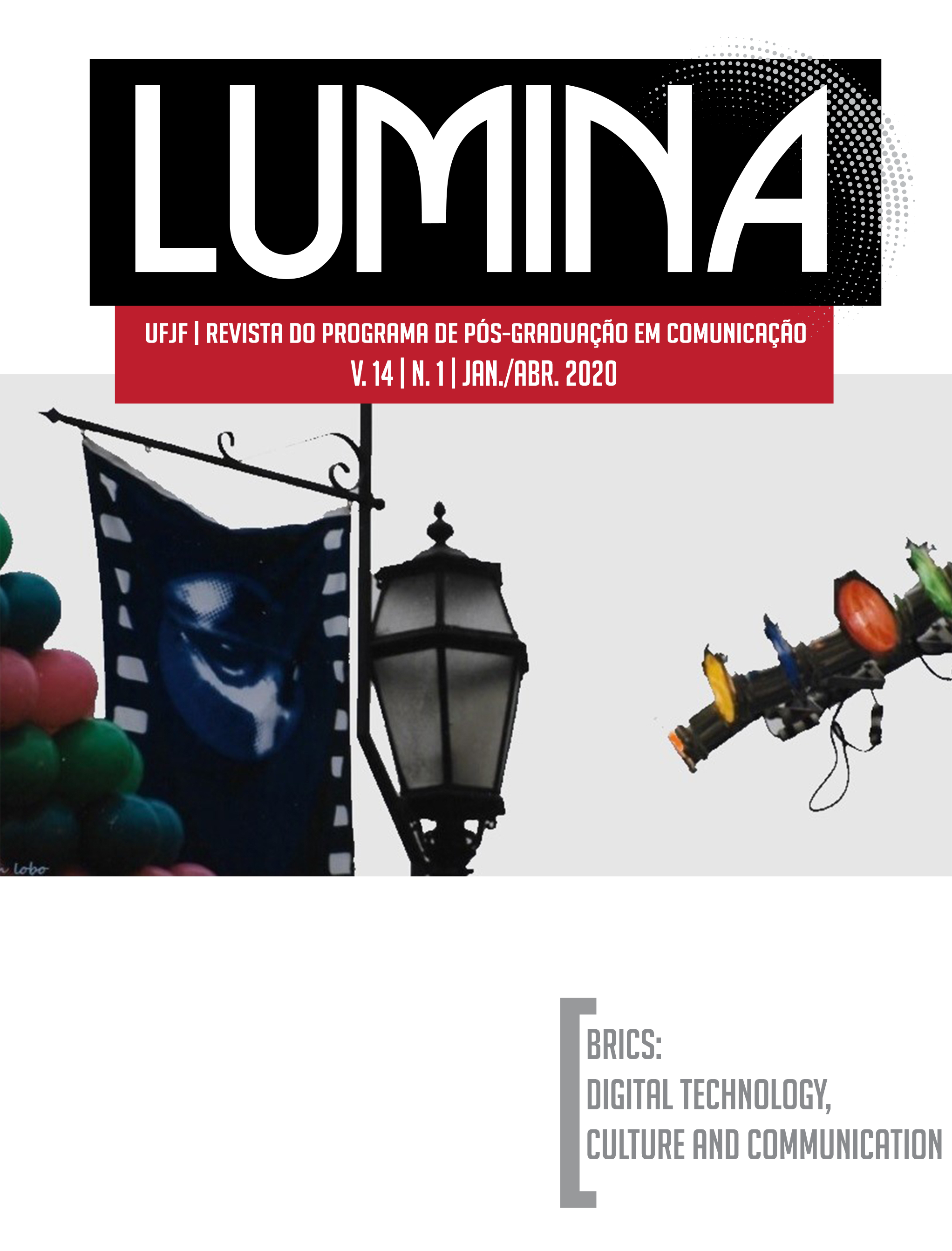For an autonomous existence of images: an archaeological perspective
DOI:
https://doi.org/10.34019/1981-4070.2020.v14.30111Keywords:
digital images, databases, media archaeology, phenomenology, AIAbstract
Monitoring and interpreting an increasing number of images has become part of people’s daily lives. These images trigger a complex process of relations that can result in direct human or non-human actions over people, over services or over the very space. As part of a broader and widespread mediascape, the repertoire of images, its organization and connection to multiple devices and huge databases, make interpretation processes much more complex and beyond our reach. When arranged in a network, technical devices do not need to follow a logic narrative of facts. Paradoxically, they contribute to the construction of all possible narratives. This work proposes, from an archaeological perspective, that the intentionality of images, especially those that are produced and circulate in digital environment, is the symptom of a contemporary episteme that delegates to objects not just a functional autonomy, but also one of existence and of description of the world. The multiplicity of digital images makes of them Beings that exist beyond the human and that constitute a kind of continuous phenomenological machinic process, an awareness of the self and of the other.
Downloads
References
ANDRIEU, Bernard. Brains and flesh: prospects for a neurophenomenology. In: Janus Head, v.9, n.1, p. 135-155, 2006. Disponível em: <http://www.janushead.org/9-1/Andrieu.pdf>. Acesso em: 15 nov. 2019.
BRUNO, Fernanda. Visões maquínicas da cidade maravilhosa: do Centro de Operações do Rio à Vila Autódromo. In: BRUNO, F. et al. (org.) Tecnopolíticas da vigilância: perspectivas da imagem. São Paulo: Boitempo, 2018.
BRUNO, Fernanda. Rastros digitais: o que eles se tornam quando vistos sob a perspectiva da teoria ator-rede? In: Anais do XXI Encontro da Compós, 2012, Juiz de Fora: UFJF. Disponível em: <http://www.compos.org.br/biblioteca.php>. Acesso em: 20 mar. 2020.
CHUN, Wendy H. K. Programmed visions: software and memory. Massachusetts: The MIT Press, 2011.
ELSAESSER, T. Cinema como arqueologia das mídias. São Paulo: Sesc, 2018.
ERNST, W. Media Archaeography: metod and machine versus history and narrative of media. In: HUHTAMO, E.; PARIKKA, J. (orgs.) Media archaeology: approaches, application, and implications. Berkeley: University of California Press, 2011, p. 239-255.
HANSEN, Mark B. N. Bodies in code: interfaces with digital media. Nova York: Routledge, 2006.
HAYLES, N. K. How we think: digital media and contemporary technogenesis. Chicago: The University of Chicago Press, 2012.
HITACHI. Development of image-analysis technology with AI for real-time people-detection and tracking. 2017. Disponível em: <https://www.hitachi.com/New/cnews/month/2017/03/170327.html>. Acesso em: 25 mar. 2020.
INTELLIVISION. About Us, 2020, Online. Disponível em: https://www.intelli-vision.com/about-us/. Acesso em: 25 mar. 2020.
LATOUR, Bruno. An inquiry into modes of existence: an anthropology of the moderns. Cambridge: Harvard University Press, 2013.
LATOUR, Bruno. Reassembling the social: an introduction to Actor-Network-Theory. Oxford: Oxford University Press, 2005.
MANOVICH, Lev. Software takes command. Nova York: Bloomsbury, 2013.
MANOVICH, Lev. The language of new media. Massachusetts: The MIT Press, 2001.
MERLEAU-PONTY, Maurice. Fenomenologia da percepção. São Paulo: Martins Fontes, 2006.
SOBCHAK, V. Afterword: media archaeology and re-presencing the past. In: HUHTAMO, E.; PARIKKA, J (org.). Media archaeology: approaches, application, and implications. Berkeley: University of California Press, 2011, p. 323-333.
SOBCHAK, V. The adress of the eye: a phenomenology of film experience. Princeton: Princeton University Press, 1992.
VICE. The sentient surveillance camera. 2015. Disponível em: <https://www.vice.com/en_us/article/nzea9q/sentient-surveillance-camera>. Acesso em: 25 mar. 2020.
Downloads
Published
How to Cite
Issue
Section
License
Autores que publicam nesta revista concordam com os seguintes termos:
- Autores mantém os direitos autorais e concedem à revista o direito de primeira publicação, com o trabalho simultaneamente licenciado sob a Licença Creative Commons Attribution que permite o compartilhamento do trabalho com reconhecimento da autoria e publicação inicial nesta revista.
- Autores têm autorização para assumir contratos adicionais separadamente, para distribuição não-exclusiva da versão do trabalho publicada nesta revista (ex.: publicar em repositório institucional ou como capítulo de livro), com reconhecimento de autoria e publicação inicial nesta revista.
- Autores têm permissão e são estimulados a publicar e distribuir seu trabalho online (ex.: em repositórios institucionais ou na sua página pessoal) a qualquer ponto antes ou durante o processo editorial, já que isso pode gerar alterações produtivas, bem como aumentar o impacto e a citação do trabalho publicado (Veja O Efeito do Acesso Livre).









